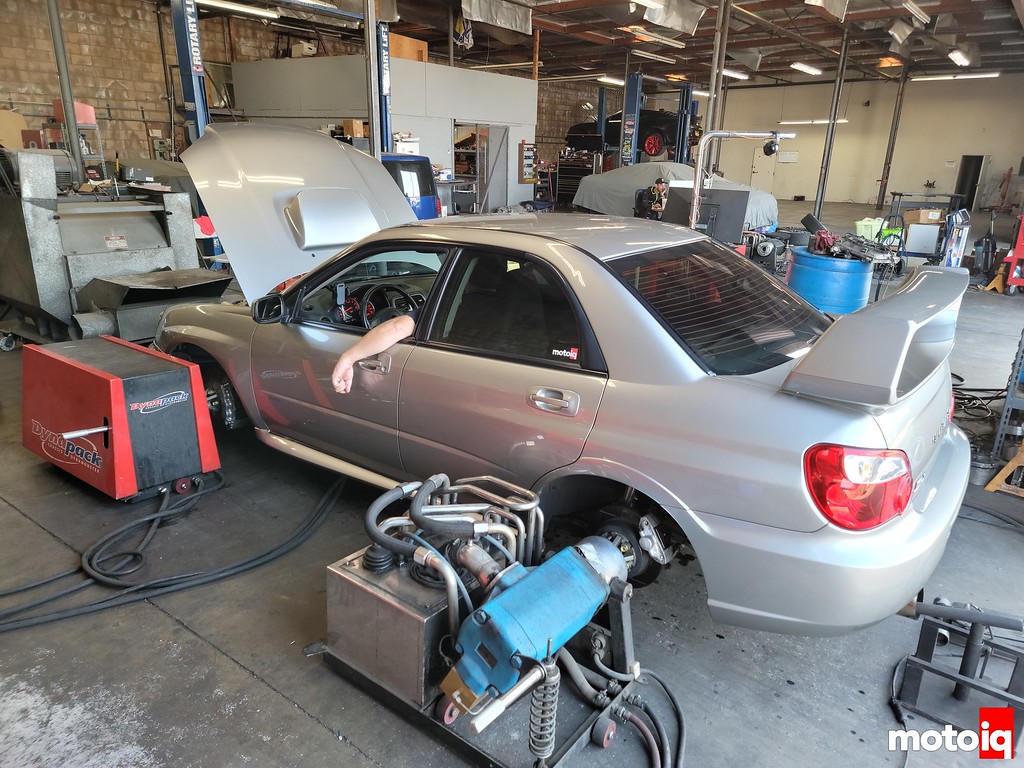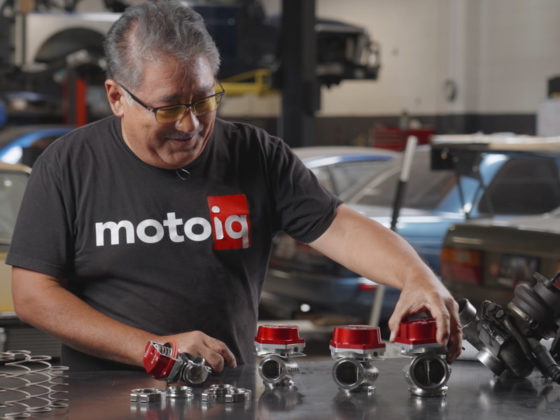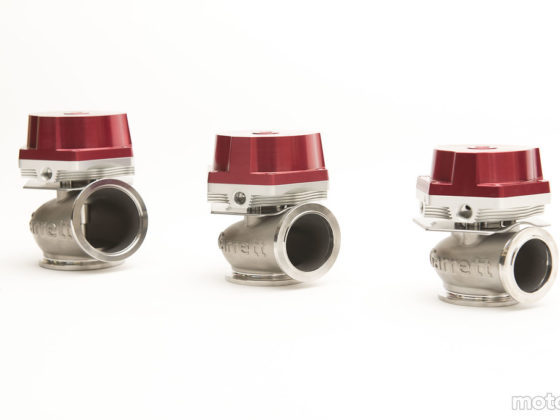
Now it was time for power tuning! We went to Church Automotive Testing where our car was bolted to their 4-wheel DynoPack dyno.

We did some pulls with native wastegate pressure to fine-tune the fuel curve and spark map, we were really close to our initial street tune and the new tweaks were at wide open throttle and load. Shawn did some sweeps to adjust the variable intake cam timing at this point as well.

So our initial pull native boost pulls showed that our engine was hitting 12 psi of boost peak and falling to 9 psi with the native wastegate pressure. We made 401 hp and 373 lb-ft of torque. Before our boost was hitting 18 psi and falling to 16 psi. and our engine was 384 hp and 404 lb-ft of torque. We were making more power with way less boost with the same turbo, this was showing that our IAG engine was pretty efficient.

It was time to turn up the boost, working carefully to avoid detonation with crappy 91-octane pump gas pee water. Shawn adjusted the Air Fuel Ratio to stay in the mid 11’s under heavy load. Shawn worked the engine up to 430 hp and 419 lb-ft of torque, this was at only 14 psi of boost peak, falling to 12 psi. We wanted to go for more but Shawn warned us to stay very conservative with 91 as the upcoming winter gas is more prone to detonation. Next, it was time to fill up on E85 and see what our engine could really do. We were making quite a bit more power on 91 pump gas than we were previously on E85, 46 more hp to be exact, which shows how efficient our IAG engine is!

With E85, the boost was turned up and, whoops. The charge pipe flew across the shop and the hose clamps went way across the shop! The funny thing is that since we switched to speed density, the car still runs pretty well even with the huge leak, just like a big NA engine.




10 comments
love it. this is pinnacle of STi building and tuning. budget be damned. Dollar spent per HP gained be damned.
Very fun read. I bet the Garrett g series would be wicked here.
Funny thing, I was comparing results with a guy that had an ETS kit with a rotated mount G30-660 and the results were just about equal to our car and we were running slightly less boost. He made a little more power, we made a little more torque. This shows that at this power level, it’s not worth going rotated mount and that this turbo works pretty well.
So it sounds like you basically ran the engine 500 miles then started doing power runs? What is your engine break in philosophy / understanding? The wide spectrum of ideas about “how it should be done” is confounding at the least. So I’m definitely curious to hear Mike’s break-in theory.
If the engine is machined and clearanced correctly, it doesn’t need much break-in.
That is pretty ridiculous for a stock location turbo at 17 psi. Very impressive!
I’m getting ready to do a very similar setup in my 2019 STI. How does that turbo drive on the street? What’s spool like in second? I have no access to E85 so that turbo at low boost looks very tempting on 93.
Subaru’s are kinda laggy but it starts at 3500 rpm and is really pulling by 4000, look at the dyno chart and compare to the stock but bolt-on mod car. That stock car had variable exhaust cam timing so it had a little more low end but a similar year car with variable intake timing would have about the same lag as our engine.
Love reading through your posts! Is there a page that has your full build list by chance? Couldn’t find one! Thanks!
https://motoiq.com/category/projects/subaru/sti-gen-2/